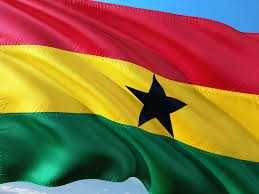**The Evolution of Ghanaian Presidential Leadership: From Dr. Kwame Nkrumah to Nana Akufo-Addo**
Since Ghana’s independence in 1957, the country has been led by a range of leaders, each bringing unique visions and challenges to their tenure. From the visionary ideals of Dr. Kwame Nkrumah to the progressive strides under Nana Akufo-Addo, Ghana’s presidency has evolved, mirroring the socio-political growth of the nation.
Dr. Kwame Nkrumah (1957-1966): The Visionary Founder
Dr. Kwame Nkrumah was Ghana’s first Prime Minister and, later, its first President. A leading figure in the Pan-African movement, Nkrumah envisioned Ghana as the “Black Star of Africa,†a model for the rest of the continent. He championed industrialization, establishing projects like the Akosombo Dam to harness the Volta River for hydroelectric power. Nkrumah’s vision extended beyond Ghana; he aimed for a united Africa and was instrumental in the formation of the Organization of African Unity (OAU). However, his ambitious socialist policies, coupled with economic difficulties, faced opposition domestically and internationally. In 1966, he was overthrown in a coup while abroad, marking the start of an era of political instability.
Years of Military Rule (1966-1981): A Nation in Transition
Following Nkrumah’s ousting, Ghana experienced a period of frequent military takeovers, with leaders like Lt. General Joseph Ankrah and Colonel Ignatius Acheampong.
These rulers attempted various reforms, but the country faced economic hardship and political instability. Among these was General Acheampong’s “Operation Feed Yourself†program aimed at promoting self-sufficiency, which made some headway in food production. Nevertheless, these years were marked by challenges, as repeated coups disrupted governance and slowed the country’s development.
Flight Lieutenant Jerry John Rawlings (1981-2001): The Revolution and Democratic Transition
In 1981, Jerry John Rawlings, an Air Force officer, took power, marking the beginning of a transformative era. Initially a military leader, Rawlings sought to address corruption and societal inequality through the Provisional National Defence Council (PNDC). However, by the early 1990s, global and domestic pressures led to a shift. Rawlings transitioned Ghana into a democratic state, forming the National Democratic Congress (NDC) and winning the first multi-party elections in 1992. His government emphasized economic reforms under the Economic Recovery Program (ERP), bringing stability and growth. Rawlings remains a pivotal figure for transforming Ghana from a military-led state to a democratic one.
John Agyekum Kufuor (2001-2009): Stability and Development
John Kufuor, Ghana’s second democratically elected president in the Fourth Republic, came into office in 2001 as leader of the New Patriotic Party (NPP). His presidency focused on stability, economic growth, and Ghana’s integration into global markets. Kufuor introduced social programs like the National Health Insurance Scheme (NHIS) to improve healthcare access. His administration also oversaw Ghana’s first oil discovery, setting the stage for the country’s economic transformation. Under Kufuor, Ghana was regarded as a beacon of democracy and economic reform in Africa.
John Atta Mills (2009-2012): Growth with Integrity
John Atta Mills, from the NDC, took office in 2009, succeeding Kufuor. Known for his emphasis on transparency, Mills was committed to fair governance. His leadership saw Ghana become a major oil producer, contributing to GDP growth. However, his term was cut short by his untimely death in 2012, marking a solemn moment for the country.
John Dramani Mahama (2012-2017): Infrastructure and Economic Challenges
Vice President John Mahama succeeded Mills and was later elected to a full term in 2012. His administration prioritized infrastructure development, with significant investments in roads, schools, and energy projects. However, Mahama’s presidency also faced economic challenges, particularly in managing the fiscal deficit and public debt. Ghana entered an IMF program under Mahama to address these issues, but the economic difficulties and power shortages sparked mixed reactions among Ghanaians.
Nana Addo Dankwa Akufo-Addo (2017-Present): Transformation and Modernization
Nana Akufo-Addo, a prominent lawyer and human rights advocate, was elected President in 2016 and re-elected in 2020. Leading the NPP, he has focused on industrialization, education, and digital transformation. His “One District, One Factory†initiative aims to boost local industries and create jobs across the country. The introduction of the Free Senior High School policy has increased access to education for Ghanaian youth. His administration has also overseen technological advancements, making Ghana a leader in digital innovation in Africa. However, his government faces challenges with public debt and economic inflation, particularly in the wake of the COVID-19 pandemic and global economic downturns.
Conclusion
From Nkrumah’s bold vision of a united Africa to Akufo-Addo’s policies on industrialization and digitalization, each president of Ghana has left an indelible mark on the country’s history. While their approaches and ideologies vary, they share a common thread—each leader has contributed to Ghana’s political and economic trajectory, shaping it into one of Africa’s most stable democracies.


